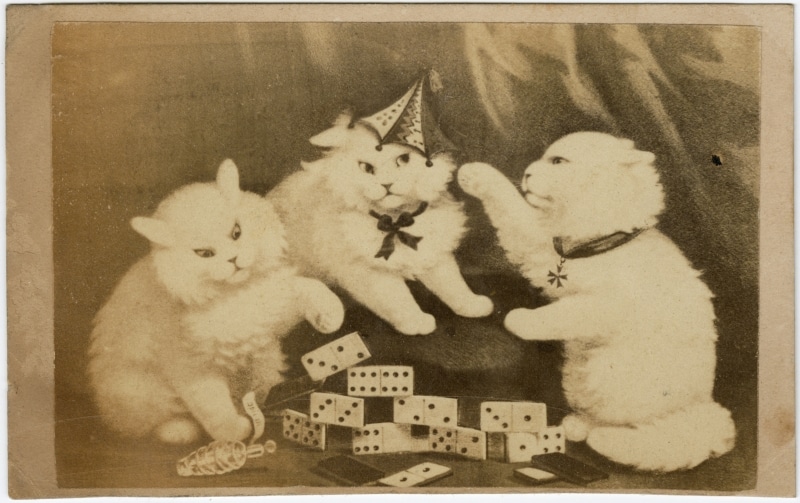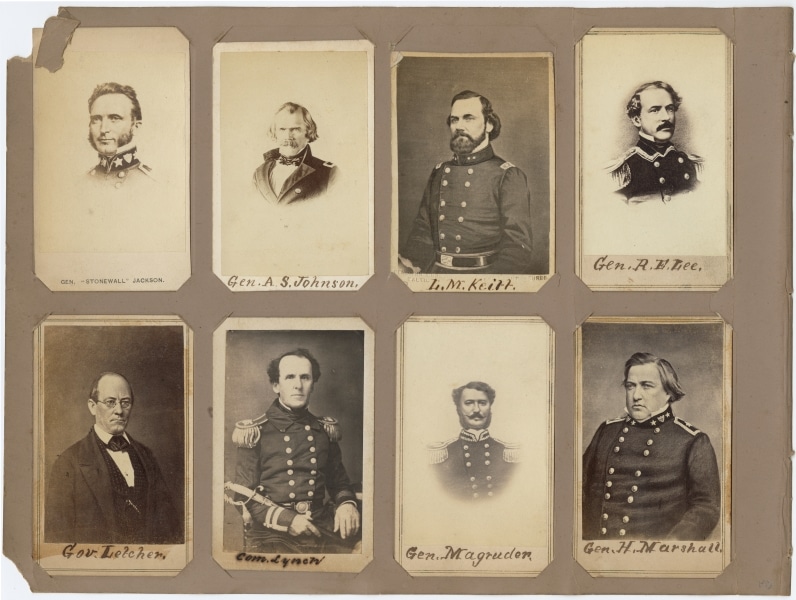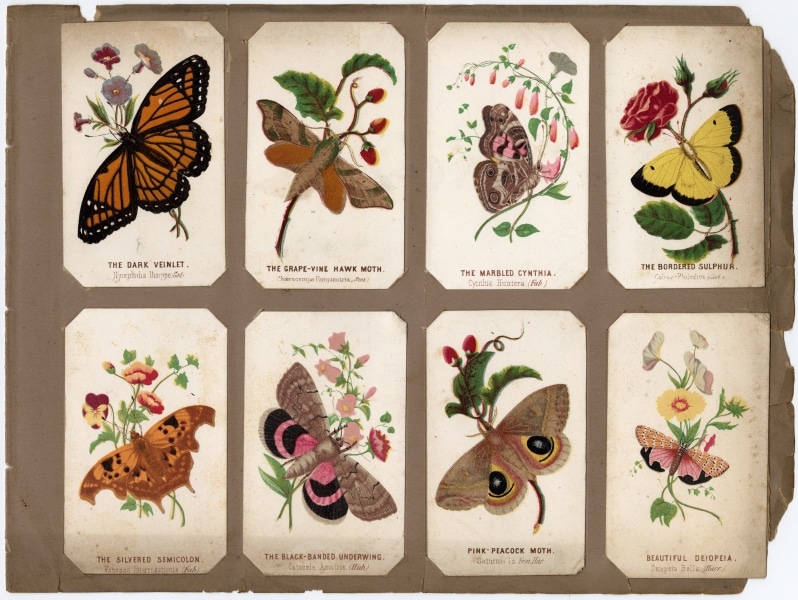Leafing Through the Mid-19th Century with Cartes de Visite
Miko Fleming, Haverford College ’24
Gladys Kreible Delmas Foundation Graphic Arts Department Summer Intern 2024

Carte de visite depicting cats at play from American Card Album (Boston: L. Prang & Co., 1864).
In 2020, the Graphic Arts Department had the honor of expanding its holdings related to the McAllister Family with the gift of a wide range of visual material donated by descendant William T. McAllister. The recently acquired material includes glass and film negatives, albums, sketchbooks, prints, maps, photographs, and ephemera that all provide valuable insight into the visual and material culture of Philadelphia from the 19th to early 20th century. One such object is a Civil War-era, carte-de-visite album containing a diverse collection of over one hundred carte-de-visite photographs and album cards. Collecting and exchanging cartes de visite was an incredibly popular pastime during the mid-19th century, and such albums can enrich our knowledge about the interests, concerns, and visual language of this time period.
In 1854, French photographer André Adolphe-Eugène Disdéri (1819–1889) patented a multi-lens camera that allowed several small images to be captured on a single negative plate. Paper contact prints made from this plate could then be trimmed to produce the many small images that were pasted onto cards to prevent curling. Because of this ability to produce duplicate images from the same plate in conjunction with the advent of paper printing techniques, cartes de visite became an alternative to more expensive forms of portrait photography and were accessible to all strata of the middle class. Cartes de visite were cheaper and more efficient to produce, did not require specialized cases to protect them, and were easy to transport in envelopes. These qualities primed them to become one of the first forms of mass-produced photographs in history, with hundreds of millions of cards produced worldwide at the height of their popularity.

Page from Prang album showing carte-de-visite portraits of Civil War heroes.
According to one story, cartes de visite did not gain widespread popularity until 1859 when Disdéri published carte-de-visite portraits of Emperor Napoleon III. Subsequently, the photograph’s popularity exploded and “Cartomania” spread from France to the rest of Europe and beyond. It was common to exchange portraits of oneself with friends and family, and for collectors of cartes de visite to add likenesses of influential people to specialized album books. The photographs often served as conversation starters, and visitors were encouraged to add their own to their host’s growing collection. In the United States, collecting images of Civil War soldiers and heroes was particularly popular. Another common practice was for young soldiers during the war to gift portraits of themselves to family members, or carry portraits of their loved ones with them when leaving for war.

Page from Prang album showing album cards published by L. Prang & Co.
In addition to photographic portraits, there was a thriving culture surrounding the collection of carte-de-visite fillers, also known as album cards. These cards, used to fill empty slots and spaces remaining in an album, included photographs, chromolithographs, and reproductions of famous paintings that were too expensive to obtain as originals. Many filler cards had familial themes, depicted amusing or beautiful scenes, or biblical stories and figures. Thus, they can provide a glimpse into the humor, romance, politics, and academic interests of the mid-19th century. For example, the album donated by William T. McAllister contains a number of exquisite chromolithographic cards of butterflies, flowers, and plants issued by lithographer Louis Prang (1824–1909). Prang was a successful printmaker based in Boston who is also well known as the “father of the American Christmas Card.” His filler cards represented in this album reflect the popular interest in horticultural study during the mid-19th century.
Flipping through this carte-de-visite album is a journey into the popular visual culture of the mid-19th century. As an intern working in the Library’s Graphic Arts Department, I was immediately drawn to the volume for this reason. It was exciting to imagine the choices the collectors made while curating their collection and arranging each page of their book. The album contains a diverse range of visual subject matter. It enriched my appreciation for photography and printmaking, and was truly a delight to work with.


